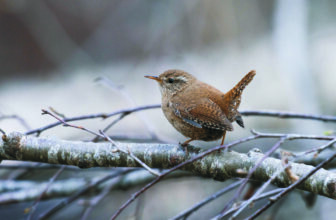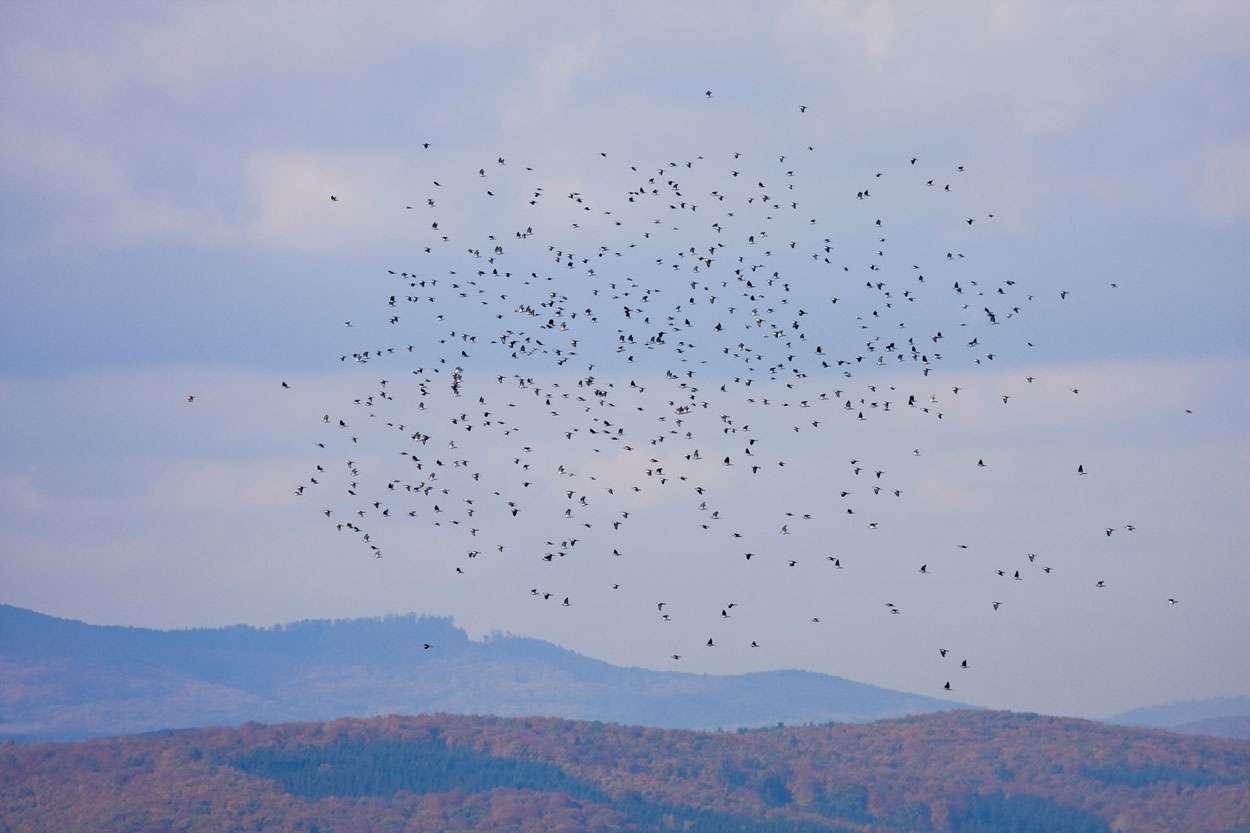
Wood Pigeons in flight © Andreas Trepte
It’s the month when many bird species notably flock up after breeding.
There are various reasons why they do this but taking advantage of safety in numbers is a key one. Getting together affords protection while feeding, hunting, nesting and roosting.
For some, forming a big flock aids migration and helps young birds stay in family parties and navigate to their wintering quarters.
I always find July a bit depressing bird-wise because it is when the gulls start appearing again over Cranleigh and the first wading birds begin returning from their Arctic breeding grounds. This signals that autumn and winter are surely on their way – seemingly before summer has even started.
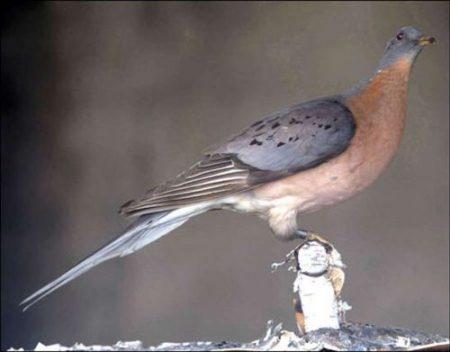
The last Passenger pigeon died in 1914. The species started decreasing in early 1800. Image credit: New Dinosaurs
At least when flocks stop off to refuel, in fields, or on muddy pools and estuaries, the percentage of first-summer birds enables us to measure breeding success. And there is always a chance of finding an even rarer species among them.
For many species the numbers in the flocks are dwindling, and as I write this in the early summer there are worrying reports from bird recorders in Surrey and around the country. It appears that many of the birds we were expecting – such as Nightingales, Whitethroats, Swifts, House Martins, Swallows and various warblers – either did not arrive at all this year or were notably down in numbers on last year.
People are asking if something catastrophic has happened in these species’ breeding grounds and questioning the influence of climate change. The answers will take some time to process.
But, as always in the birding world, I am reminded to enjoy every bird for its own sake and not to get blasé about its apparent common status. I have witnessed locally how status can change in just a few years. In a future Cranleigh Magazine article I will be writing more on the birds we in Cranleigh and district have lost.
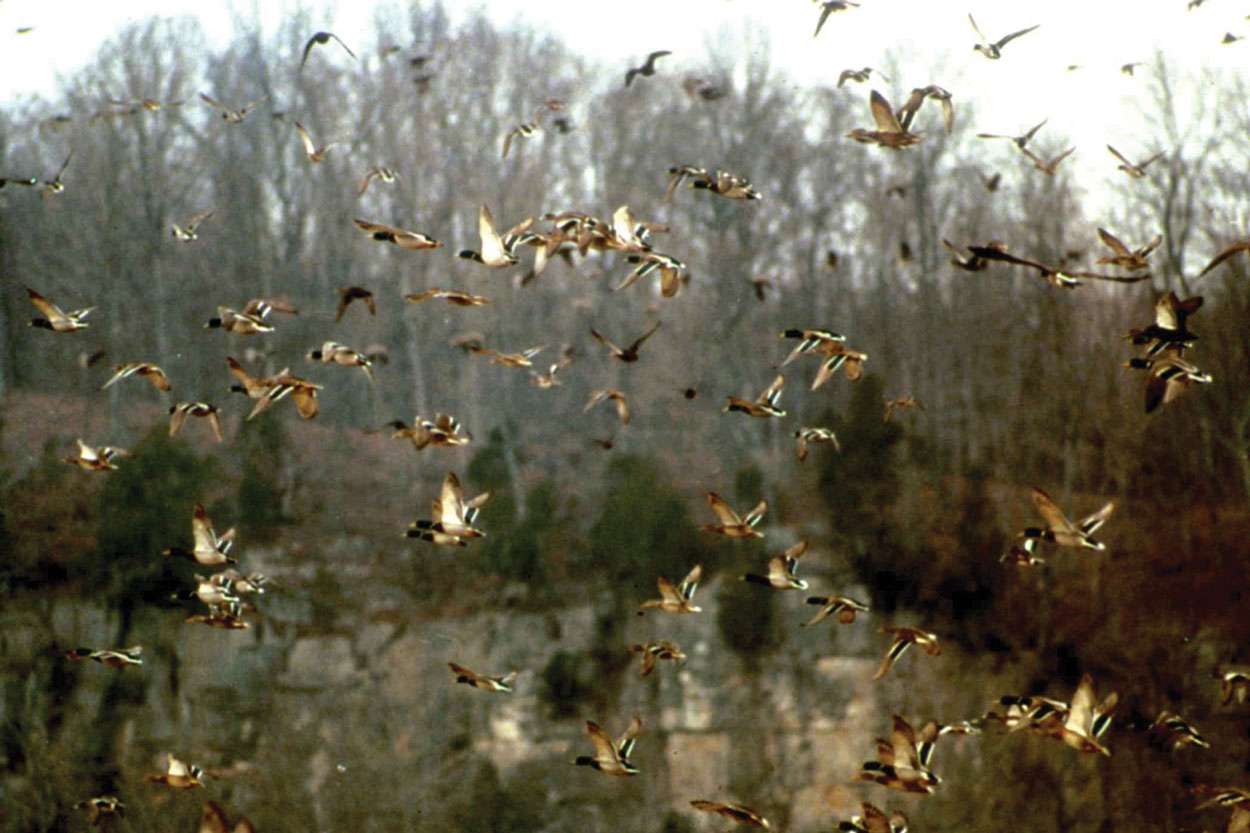
Flying high: the biggest local record counts of birds were for the ‘common’ Wood Pigeon and Mallard (© Dan O’Neal, USFWS)
The world’s worst example of decline is a stark warning of what can happen. In North America in 1749 the Passenger Pigeon was so numerous that one flock was reported as extending three or four English miles in length and over a mile in breadth.Writing about this later, one Pehr Kalm* wrote: ‘… they flew so closely together that the sky and the sun were obscured by them, the daylight becoming sensibly diminished by their shadow. The big as well as the little trees in the woods, sometimes covering a distance of seven English miles, became so filled with them that hardly a twig or a branch could be seen which they did not cover; on the thicker branches they had piled themselves up on one another’s backs, quite about a yard high.’
By the 1830s there were still huge numbers. But 70 years later they had gone from the wild. The last sure record of a wild bird was reportedly a female, shot in 1900 by a 14-year old boy in Ohio. Extinction followed years of mass slaughter by pigeon hunters and the very last bird, Martha, died in a zoo in 1914.
This got me investigating what record flocks of different birds are recorded for the Cranleigh area and it clearly shows a worrying trend. The biggest were, in nearly all cases, last century.
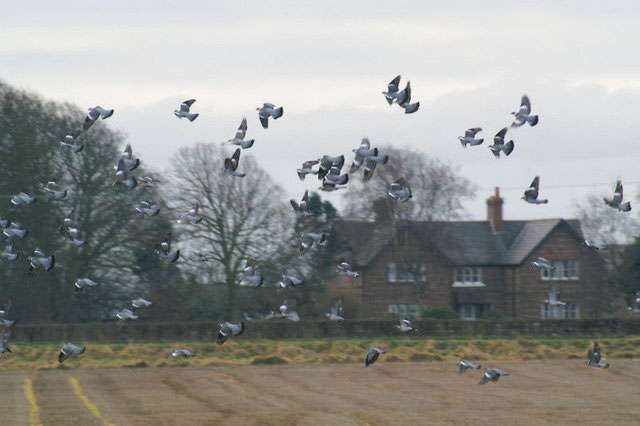
Wood Pigeon (Columba palumbus) Photograph © Copyright Mike Pennington
My up to date ‘top of the flocks’ list, drawn from my own observations and those reported from other observers in Surrey Bird Club literature. (see below)
Of course, I keep counting the flocks I see but the total is now nearly always way below the records of the 1900s.
We are only 18 years into the new millennium. I wonder how bad it can get. We should all remember the fate of the Passenger Pigeon.
*quoted in Errol Fuller’s book Extinct Birds, Oxford University Press.
Top of the Flocks
New records this century in bold
Wood Pigeon, c20,000, 11 November 1969
Mallard, c3,000, 26 September 1965
Lapwing, c850, 7 February 1999
Fieldfare, c680, 1 January 2001
House Martin, c600+, 24 September 1970
Jackdaw, c600, 7 February 1999
Starling, c550, 6 November 2016
Redwing, c500, 1992-93, various dates
Black-headed Gull, c450, December 1997
Barn Swallow, c300, 22 August 1962
Canada Goose, c260, 28 August 1989
Meadow Pipit, c260, 19 November 2006
Herring Gull, c250, 6 November 2016
Linnet, 225, 19 October 1963
Greylag Goose, 202, 28 November 2013
Pied Wagtail, c200, November-December 1985
Yellowhammer, c200, January 1989
Reed Bunting, 186, January 1989
Blue Tit, 171, 16 June 2002
Skylark, c150, November 1962
Lesser Redpoll, c150, 1990, various dates to May
Pochard, 140, 1996, various dates
Greenfinch, c140, 4 August 1998
Mandarin, c100, 23 November 1962
Coot, c100, 22 September 1986
Lesser Black-backed Gull, c100, regularly until 1999
Swift, 156+, 9 June 2001
Chaffinch, c100, regularly up to the late 1900s
Siskin, c100, 23 September 1997
Tufted Duck, 80, 1996, various dates
Common Gull, 80, 23 December 1998
Tree Sparrow, 80+, 8 January 1989 (extinct locally and near extinct in Surrey)
Collared Dove, 70+, 12 October 1998
Stock Dove, 64, 13 April 1998
Cormorant, 72, 24 December 2002
Great Tit, 50, 19 January 1964
Magpie, 50, 1919
Rook, 110, 25 January 2001
Grey Heron, 50, 1999
Common Crossbill, 45, May 1998
Brambling, 40+, 11 March 1994
Wigeon, 36, 20 November 1989
Curlew, c36, 20 November 1962
Mute Swan, 12, 1998
I would be pleased to hear from anyone with larger counts of these and any other species in and around our village.
To check out all of Robin Stride’s Crane Spotter articles, Click here



